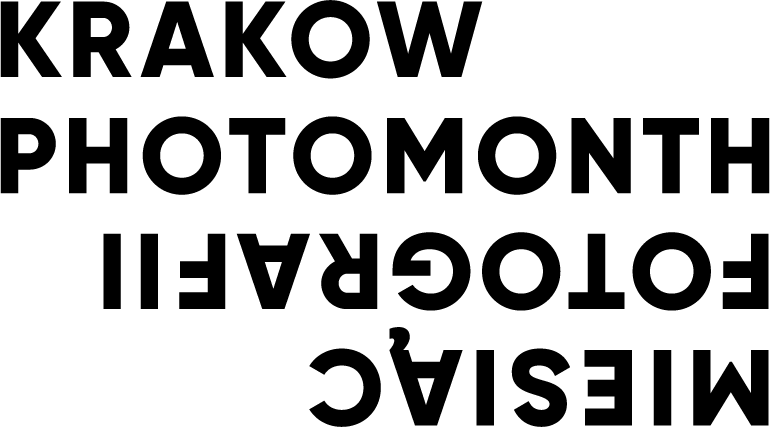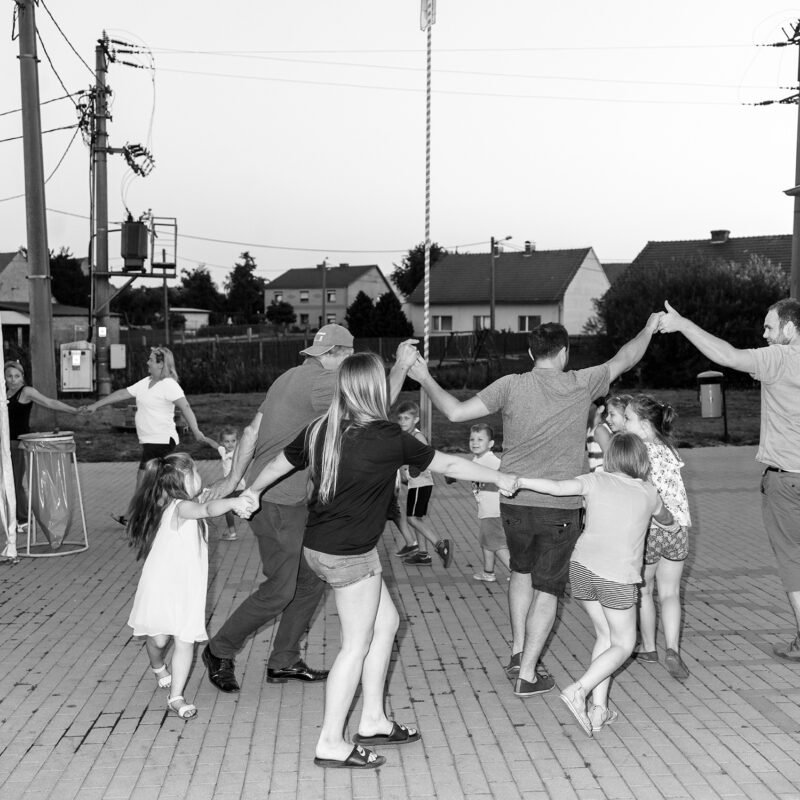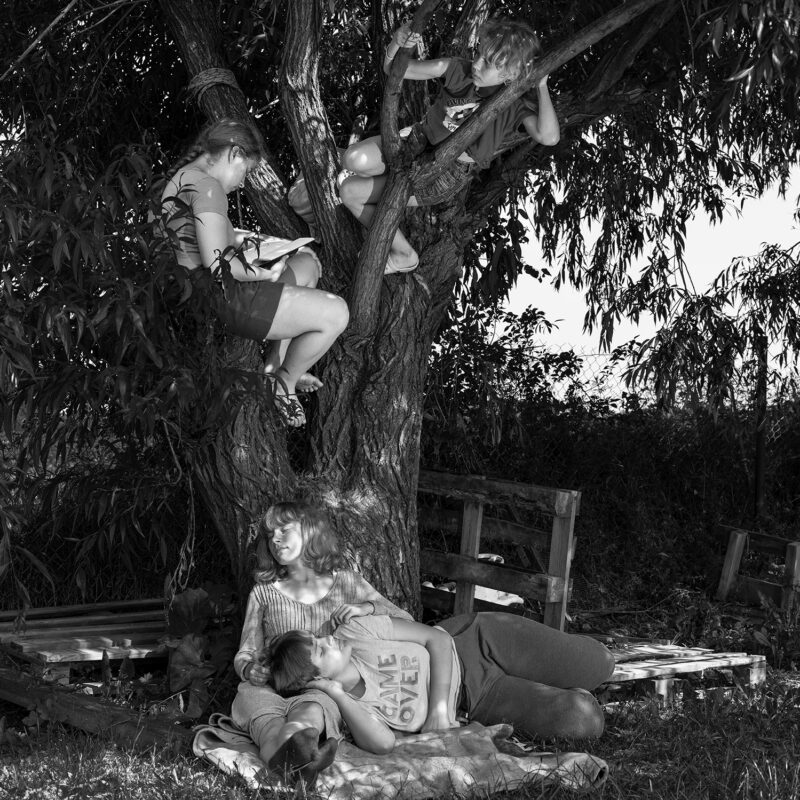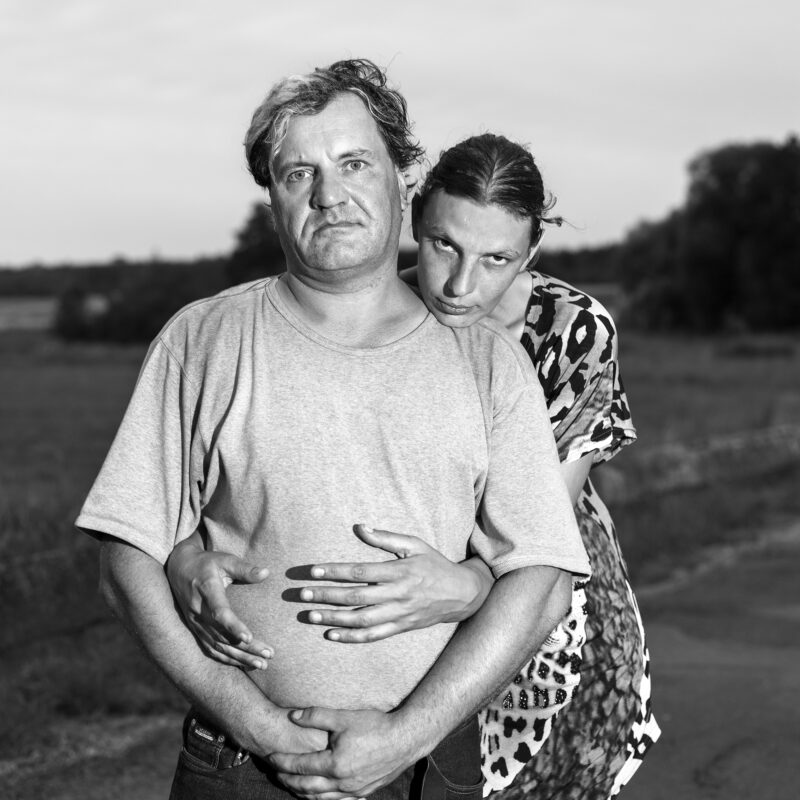Dyba Lach, Adam Lach, Wounded Birds Are Wary
Curator: Michał Łuczak
Place:
Szara Kamienica Gallery
ul. Rynek Główny 6
Exhibition open:
27.06. - 14.07.2020
Tue - Fri 1 pm - 7 pm
Sat - Sun 11 am - 7 pm
15.07 - 26.07.2020
Thu - Fri 3 pm - 7 pm
Sat - Sun 11 am - 7 pm
Tickets:
Free admission
Over the past three-and-a-half years, Adam and Dyba Lach have passed through Poland A, Poland B, and Polands of every other letter. Their work itinerary recalls the heyday of reportage, when editorial offices sent reporters to regions around the country simply to check in with how things were on the ground. A reporter wasn’t given unlimited time, but still had ample opportunity to properly cover an area, and even to grow bored with it.
Back then, the country was closed but the people: open. Today, the world has accelerated. It seems smaller. Borders are, for the most part, crossable. And yet for some time now in Poland, everything has felt entrenched: the sides, views, and divisions, the myths and symbols. Diagnoses are readily available and easy to ingest. All you have to do is pick one out.
Adam and Dyba Lach, however, had their doubts, which formed the basis of the texts and photographs comprising the book How to Rejuvenate an Eagle. Unlike that book, the exhibition Wounded Birds Are Wary is textless. All you need to know upon entering the gallery is that we are in Poland—and Poland during ‘interesting times.’
You can show a lot through photographs, but not necessarily with concrete exactness. Much depends on the contexts we each bring. When considering photography, and Poland itself, one should heed the words sung by Maria Peszek in ‘Polska A B C & D’: ‘Nothing is what it seems.’
.
Michał Łuczak
9 March, 2020
.
—
We concluded curatorial work on the exhibition with the above text. I wrote the final version on 9 March, a Monday. On Wednesday, 11 March, the Polish government ordered all educational facilities closed beginning the following day. On 14 March, it declared a ‘state of epidemic emergency.’
The media reality was replete with statements about the historical nature of the ‘unprecedented’ situation, and the potential changes the pandemic might necessitate.
Nevertheless, we present the exhibition in unchanged form. We supplemented it with a single new photograph, taken during the pandemic, which we placed in a separate part of the gallery. This decision was noteworthy, because although nothing has been altered, something is different.
Photography is linked to the time of its creation, especially documentary or reportage. But the moment when one looks at it is one of its contexts, as I wrote above.
.
18 June, 2020
.
.
Adam Lach is a documentarist and visual artist. He has done assignments for the New York Times, Le Monde, the Guardian, GEO, and Newsweek. He has won Pictures of the Year International, International Photography Awards, and Grand Press Photo competitions. He is the author of two photobooks: Stigma, which earned 1st Place distinction from the IPA, and Neverland, which is included in the Tate’s Martin Parr photobook collection. His photograph Freedom was chosen as the winner of Press Club Polska’s ‘Icon of 30 Years: Freedom and Solidarity’ competition. His works have been exhibited at La Quatrième Image festival in Paris, the Prague Biennale, and Harvard University.
Dyba Lach is a documentarist, producer, and author. She is a graduate of the Film School in Łódź, and, in press photography, the Institute of Journalism at the University of Warsaw. She is co-author of the photobook Stigma, which won an IPA award and was selected as a 2014 publication of the year at the Stefan Batory Foundation’s Beata Pawlak competition. In 2015, she was a finalist at the second edition of the DEBUTS competition for young photographers. She directs and coordinates artistic events, performances, concerts, cultural projects, and short documentaries.
Michał Łuczak is a photographer and curator. He completed his doctorate at the Institute of Creative Photography at the University of Silesia in Opava (Czech Republic); and is a graduate of the University of Silesia in Katowice, where he majored in Iberian studies. Since 2010, he has been a member of the Sputnik Photos collective. In addition to his artistic practice, he co-runs Sputnik’s Mentoring Programme, an annual documentary-photography workshop. He is also a lecturer in the Faculty of Arts at the Pedagogical University of Krakow. He is the author of several photobooks: Brutal (2012); Koło miejsca/Elementarz [Environs/Primer], with Krzysztof Siwczyk (2016); and 11.41, with Filip Springer (2016).
.
IMPORTANT INFORMATION! Due to sanitary restrictions max 12 people are allowed to stay in the exhibition space, addition to the artists.
.
.
.
